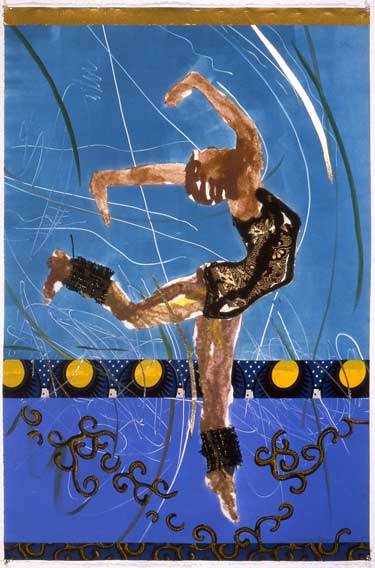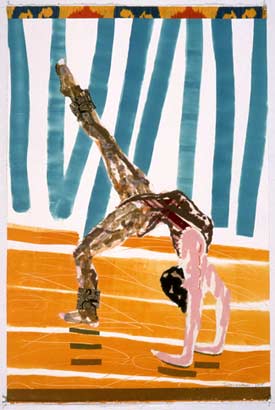by Lu Bailey
This year, my 10 year-old told me that she wanted to try out for the cheerleading squad at her elementary school. First of all, is there really a competition to “make the team” at 10-years-old? The answer is a resounding YES!
So, off we went to cheerleading practice and later to countless basketball games in Midwestern towns that I would probably not visit in my lifetime. The experience was eye-opening and confirmed (for me) that young girls continue to receive social cues that connect their worth with their looks, as well as steer them in “supportive” roles rather than leadership positions.

I have to admit that I had some reservations about this whole cheerleading thing. My first problem was that the squad only cheered for the boys’ basketball team and not for the girls’ team. Does girls’ basketball require less support? Perhaps the girls have so much self-esteem and confidence that they don’t need people encouraging them to “go team.”
Rooting for Boys But Not Girls
I found this odd. When I asked about it, I was told that the cheerleading squad only cheers for boys’ basketball and football. I have a feeling there was some uneasiness about girl cheerleaders rooting for female athletes. As a society, we have become accustomed to silky, sexy cheerleaders “shaking it” for professional male athletes and we can’t imagine how that translates into cheering for female athletes.
After all, would sexy outfits be needed to cheer for women athletes? I don’t think so. Might there also be some homophobic undertones associated with “woman-on-woman” cheerleading?
I raise this issue because young girls are being socialized early on to just cheer for the boys (which is the case at my daughter’s school) in sports – which can trigger a tendency for girls to only cheer for, or support, males in all aspects of life. The school’s decision to “not cheer” for the girls’ basketball team sends a very clear message, in my opinion, that says we don’t value girls’ sports or the contributions they make to the school — at least not enough to develop a cheer of encouragement. I asked my daughter her opinion and she said she would like to cheer for the girls because they need to know that the school is behind them, too. Good answer and so true.
I have another issue with cheerleading at the elementary school level and its impact on body type, size and image. My daughter, along with several of the other girls on the squad, is not skinny, and she has some meat on her bones. Of course, the skinny girls on the team were always the ones featured in the front and thrown up in the air so they could land in the arms of the more “bulky girls.”
On Whose Shoulders?
I remember the uneasy feeling I had when I saw my daughter hoist a little girl onto her shoulders and then flip her over her head. Yes, I know that we only want to lift skinny people, but what about developing cheerleading routines that don’t require throwing anyone up in the air? This would eliminate the tendency to use the heavier or stronger girls as human safety nets, which is how (I believe) they used my little girl.
I remember telling my daughter that I was shocked to see her lift the little skinny girl onto to her shoulders, especially since she can’t seem to lift the clothes and toys from the floor in her room when it’s clean-up time. Of course, she didn’t see the connection.

By developing cheerleading routines that focus on, or reward, based on the weight and body type of the cheerleader, we automatically send a message to heavier girls that they will never be in the spotlight or featured in front because they aren’t skinny or light.
When we signed up for cheerleading, I thought it would be a good opportunity for my daughter to stay active and fit, enjoy the company and support of girls, and be part of the school community. I soon found out that people really take cheerleading very seriously, even at the elementary school level, and often echo the sentiments of the late Oakland Raiders’ president, Al Davis: “Just Win, Baby!”
My daughter and I agreed that she wouldn’t continue with cheerleading next year for several reasons. My main objection remains that I don’t think cheerleading, in its current form (especially at her school), promotes the values that help produce strong girls with leadership qualities and that posses a positive self-image.
I work with my daughter on a daily basis to help her feel good about her body, her hair and her skin tone. I also want her to know that girls can be cheerleaders, as well as basketball players, and that it’s okay to have people cheering you on, as well.
I also want her to know that I didn’t raise her to be a human safety net — I want her to be comfortable in the spotlight, as well as the background. And, I told her the next time I see her hoisting a skinny little girl onto her shoulders, it better be to help her clean the dust bunnies on top of the ceiling fan in her room.
Lu Bailey is the former president of the Chicago Council on Urban Affairs and the co-founder of the Women of the Millennium Project (an initiative to build partnerships and collaborations among racially diverse groups of women). Lu Bailey is a fundraising consultant and director with LA Communications, a full-service firm that helps non-profits with strategic planning, fundraising, public relations, and community outreach. She is also a recipient of several awards, including the Metropolitan Chicago and Lake County, Illinois YWCA Racial Justice Award.
Also See A Soccer Dad Faces Parenting, Coaching and Dreams by Mauricio Espinoza
See Bodies in Motion: Physical Females Face Different Risks by Eleanor J. Bader
Read the Cafe for new and updated stories.
